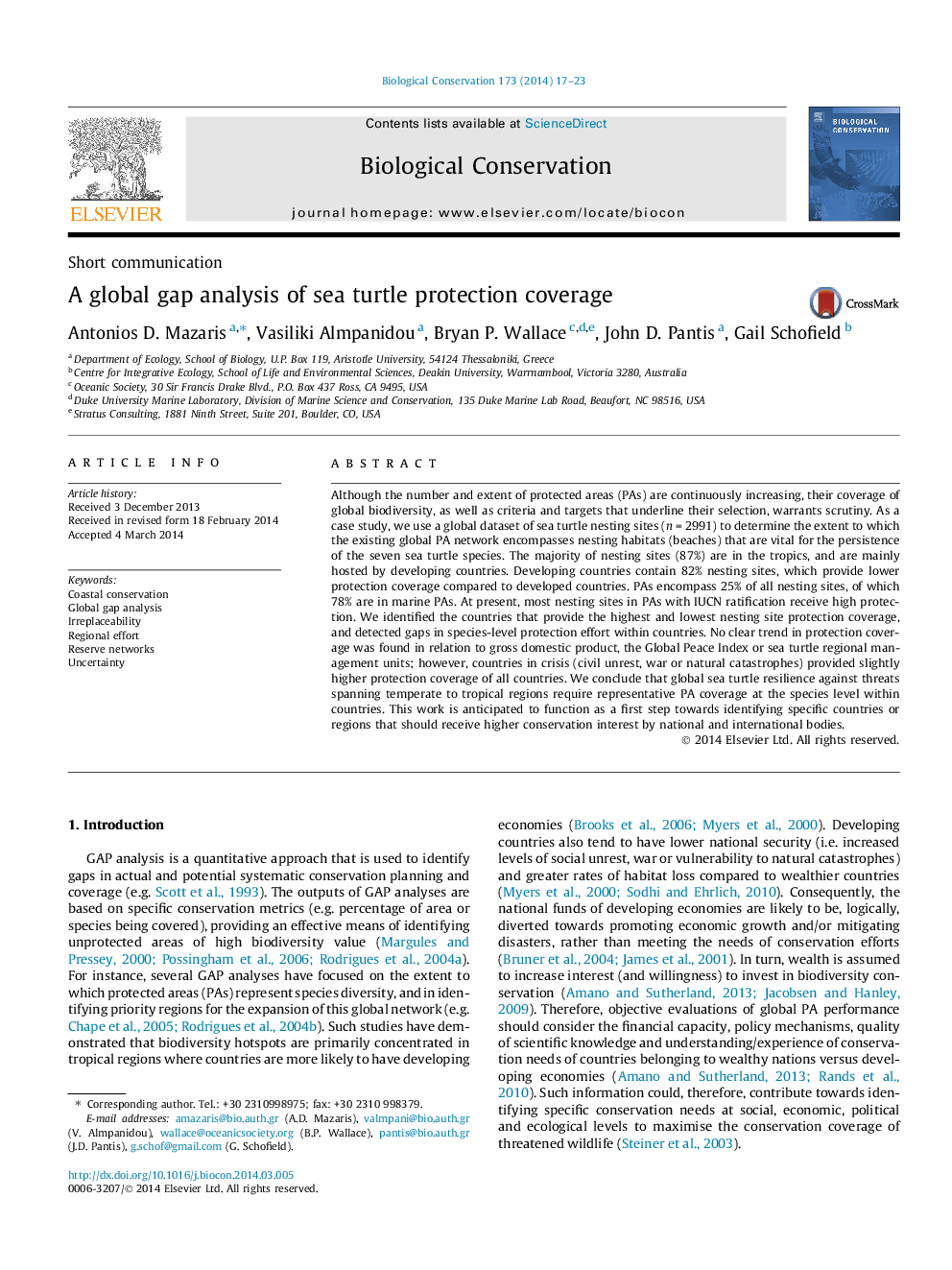| کد مقاله | کد نشریه | سال انتشار | مقاله انگلیسی | نسخه تمام متن |
|---|---|---|---|---|
| 6299542 | 1617928 | 2014 | 7 صفحه PDF | دانلود رایگان |
عنوان انگلیسی مقاله ISI
A global gap analysis of sea turtle protection coverage
ترجمه فارسی عنوان
تجزیه و تحلیل شکاف جهانی پوشش حفاظت از لاک پشت دریایی
دانلود مقاله + سفارش ترجمه
دانلود مقاله ISI انگلیسی
رایگان برای ایرانیان
کلمات کلیدی
حفاظت ساحلی، تجزیه و تحلیل شکاف جهانی، غیر قابل تعویض، تلاش منطقه ای، شبکه های رزرو عدم قطعیت،
موضوعات مرتبط
علوم زیستی و بیوفناوری
علوم کشاورزی و بیولوژیک
بوم شناسی، تکامل، رفتار و سامانه شناسی
چکیده انگلیسی
Although the number and extent of protected areas (PAs) are continuously increasing, their coverage of global biodiversity, as well as criteria and targets that underline their selection, warrants scrutiny. As a case study, we use a global dataset of sea turtle nesting sites (n = 2991) to determine the extent to which the existing global PA network encompasses nesting habitats (beaches) that are vital for the persistence of the seven sea turtle species. The majority of nesting sites (87%) are in the tropics, and are mainly hosted by developing countries. Developing countries contain 82% nesting sites, which provide lower protection coverage compared to developed countries. PAs encompass 25% of all nesting sites, of which 78% are in marine PAs. At present, most nesting sites in PAs with IUCN ratification receive high protection. We identified the countries that provide the highest and lowest nesting site protection coverage, and detected gaps in species-level protection effort within countries. No clear trend in protection coverage was found in relation to gross domestic product, the Global Peace Index or sea turtle regional management units; however, countries in crisis (civil unrest, war or natural catastrophes) provided slightly higher protection coverage of all countries. We conclude that global sea turtle resilience against threats spanning temperate to tropical regions require representative PA coverage at the species level within countries. This work is anticipated to function as a first step towards identifying specific countries or regions that should receive higher conservation interest by national and international bodies.
ناشر
Database: Elsevier - ScienceDirect (ساینس دایرکت)
Journal: Biological Conservation - Volume 173, May 2014, Pages 17-23
Journal: Biological Conservation - Volume 173, May 2014, Pages 17-23
نویسندگان
Antonios D. Mazaris, Vasiliki Almpanidou, Bryan P. Wallace, John D. Pantis, Gail Schofield,
